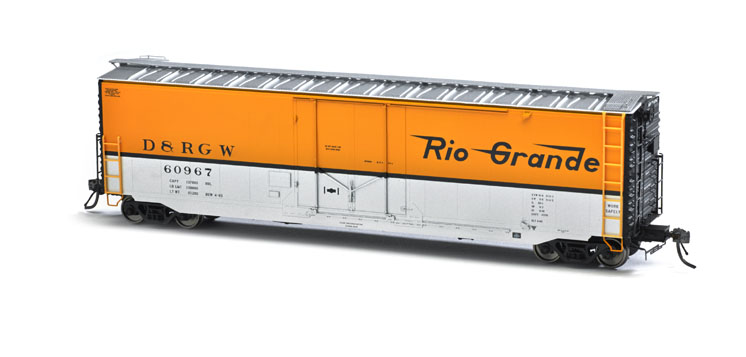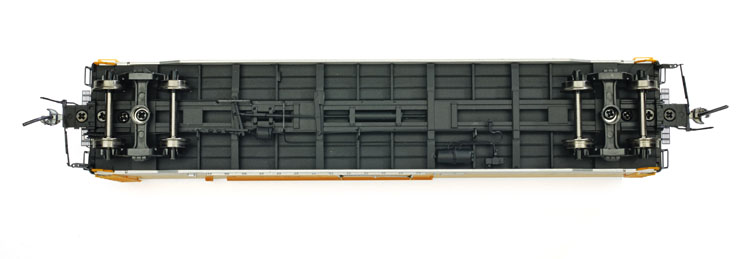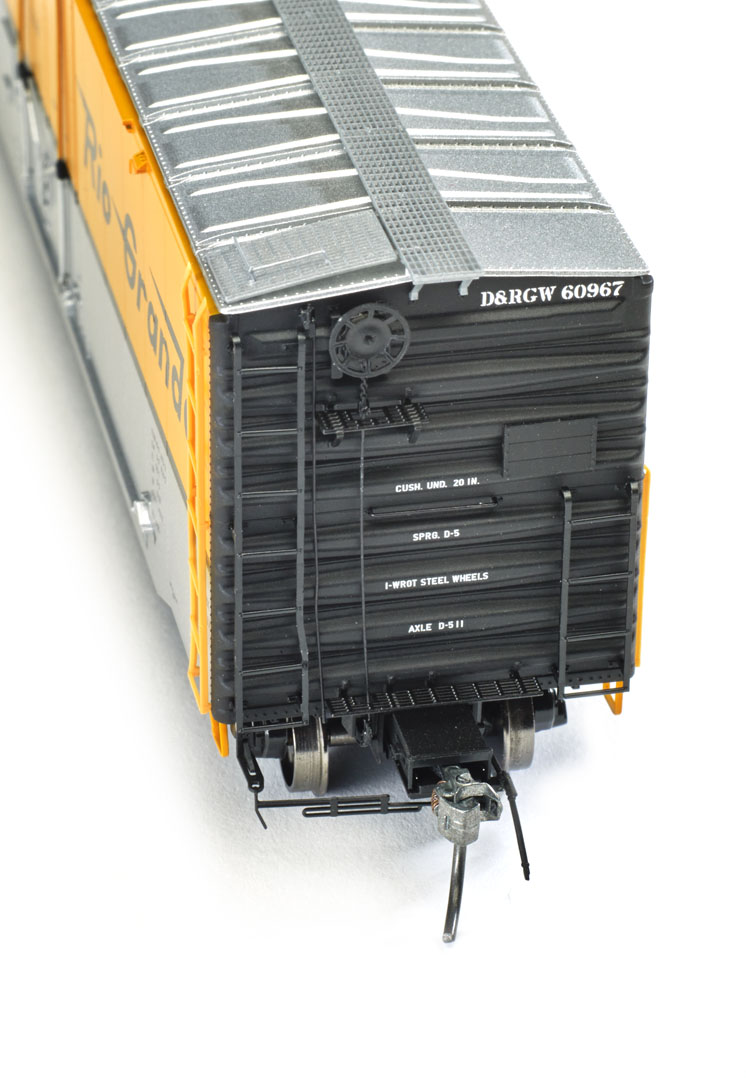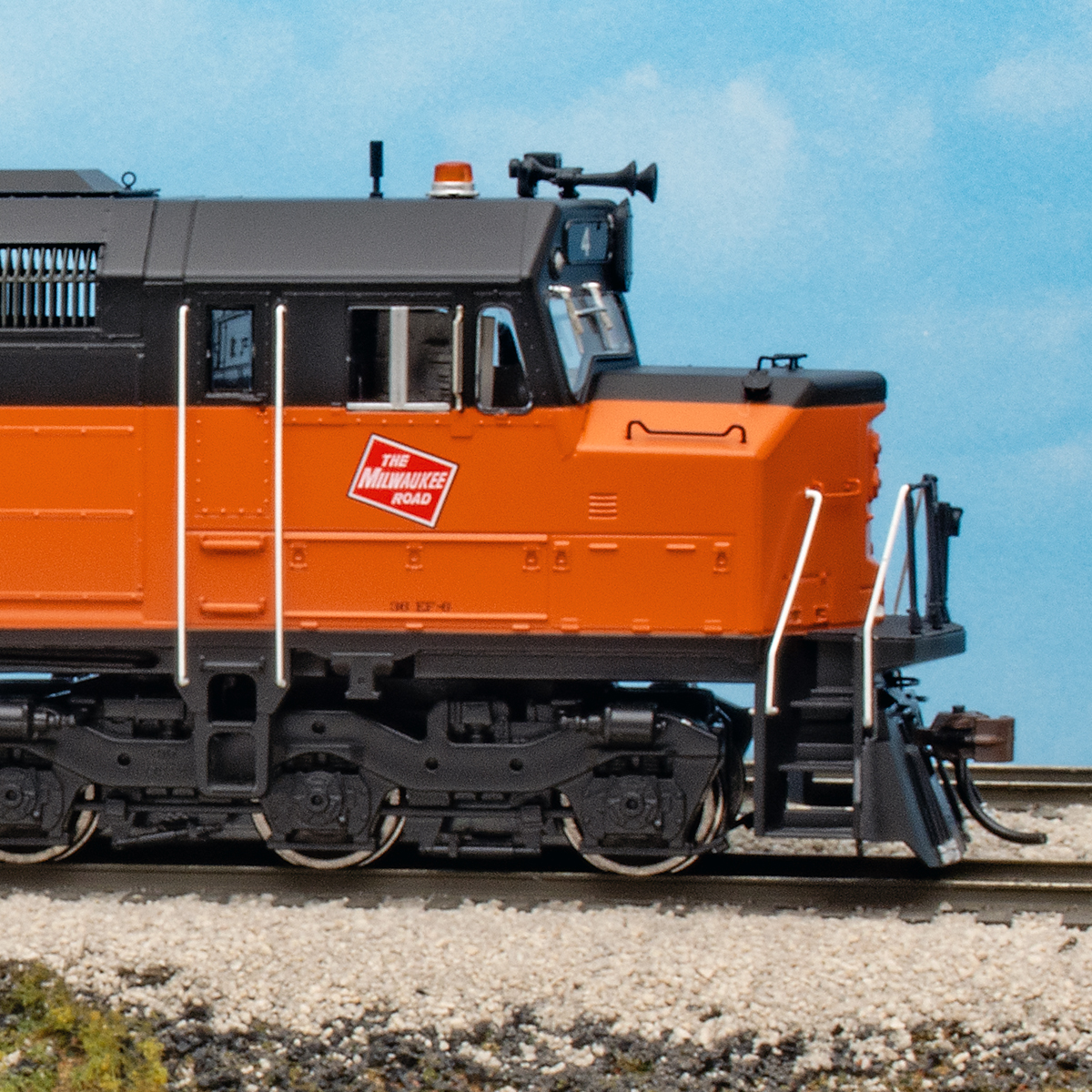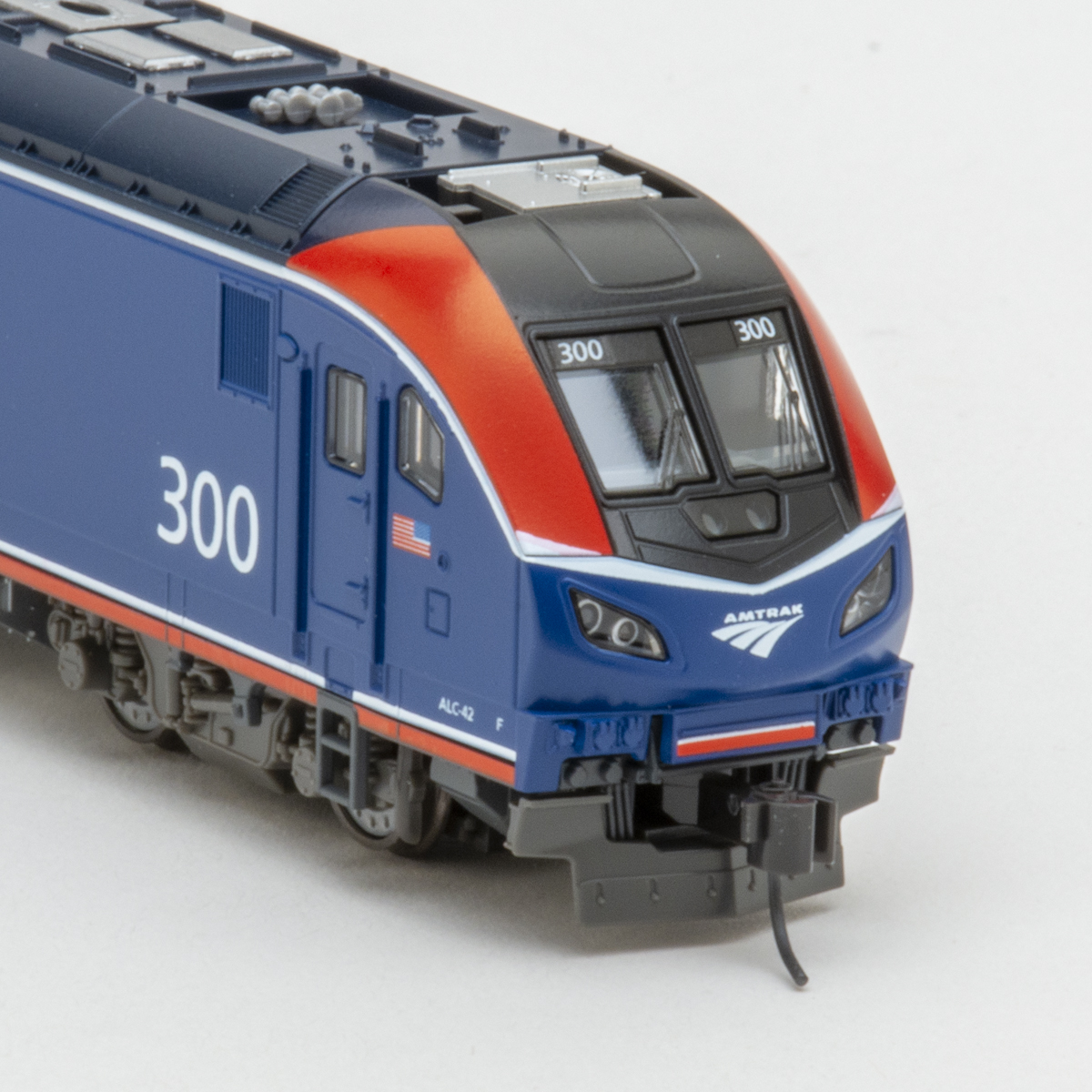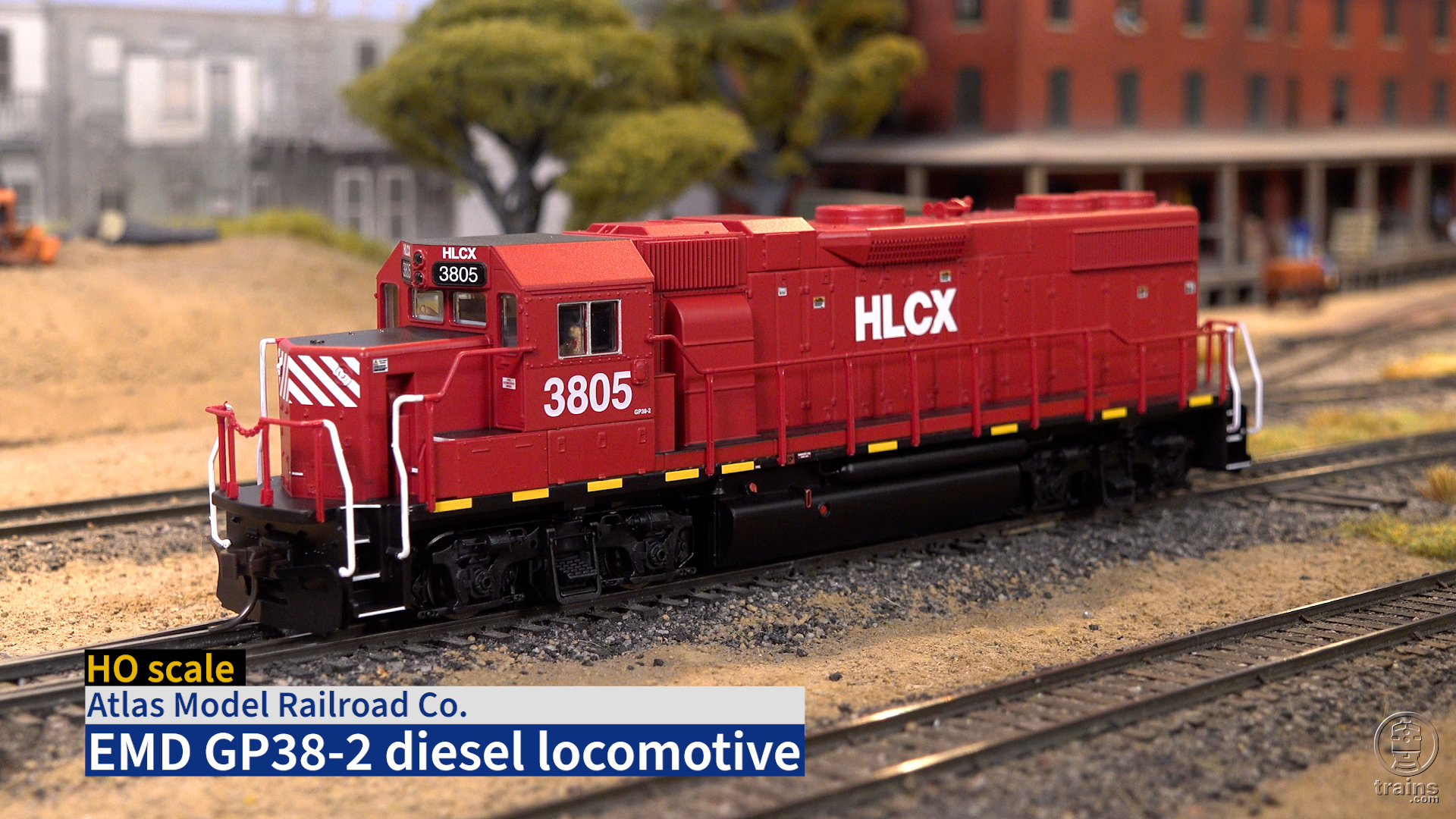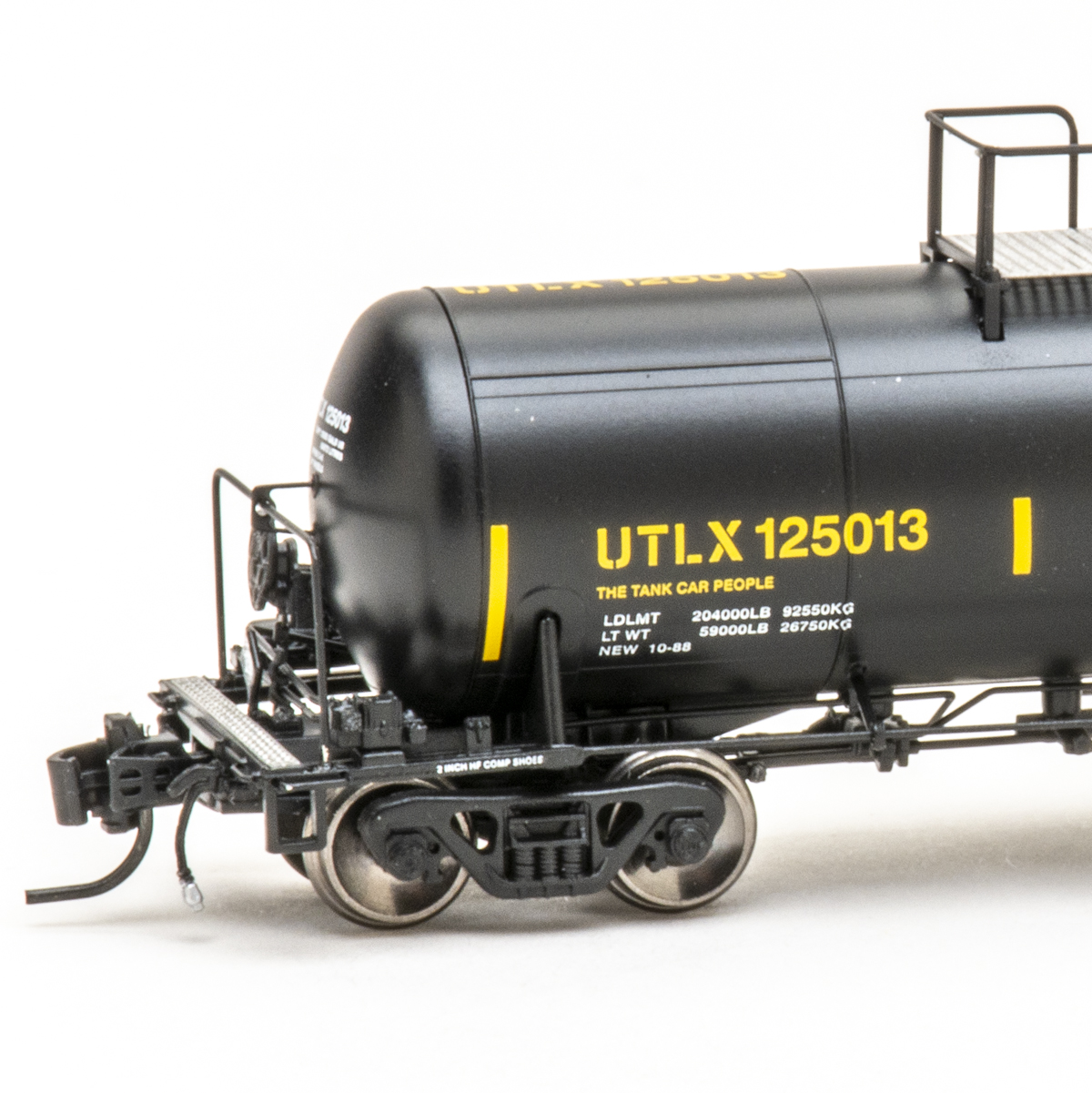General American, building on the success of its 50-foot insulated boxcars constructed in the 1950s, debuted this version of its RBL in 1962. The biggest change between the 1960s cars and those from the previous decade was the all-welded body construction. The only part of the body not welded was the roof, which was secured with bolts after the car’s insulation was added.
So what is an RBL? It’s a bunkerless refrigerator-type car with movable loading devices. These cars were used to transport canned goods, beer, perishables, and other temperature-sensitive materials.
The injection-molded plastic model features a four-piece body (separate sides and ends), a one-piece roof, and separate underbody. A steel weight is secured to the inside of the floor.
Our sample is decorated as Rio Grande no. 60967. The model is based on a 100-car order built in 1965. Cars in this series featured a cushioned underframe, 10-foot Youngstown plug doors, and movable bulkheads. Six cars from this class were still in service in 2002.
The model’s dimensions closely match prototype information published in the January 1966 edition of The Official Railway Equipment Register. The paint on the model is smooth and evenly applied, and all of the printing is legible. The lettering placement matches a prototype photo in Jim Eager’s book Rio Grande Color Guide Freight and Passenger Equipment (Morning Sun Books, 1996).
The model has correctly gauged 33″ metal wheelsets mounted on metal axles. The Kadee scale whisker couplers are at the correct height, though the trip pin on the A end coupler was too low. This is an easy fix with a pair of trip pin pliers. At 4.2 ounces, the car is .3 ounce too light based on National Model Railroad Association recommended practice 20.1.
I put the boxcar in a train on our Wisconsin & Southern project layout. It rolled freely and easily negotiated the Peco no. 5 turnouts.
Moloco did its homework when designing this model. This well-detailed and proportioned model would look good on any layout set between the mid-1960s and the 2000s.
Price: $55
Manufacturer
Moloco
193 Lakewood Dr.
Oakville, ON L6K 1B3
Paint schemes
Denver & Rio Grande Western; Chicago Great Western; Gulf, Mobile & Ohio; and Soo Line. Four road numbers per scheme.
Era: 1965 through 2002 (as painted)
Features
▪▪33″ metal wheelsets, in gauge
▪▪Etched-metal crossover platform, brake platform, and metal uncoupling levers
▪▪Prototype-specific cushioning devices (Hydra-Cushion or Keystone), door stops, door gussets, brake wheel, and sill design
▪▪Rubber air hoses
▪▪Kadee couplers
▪▪Wire brake rods and air pipes





